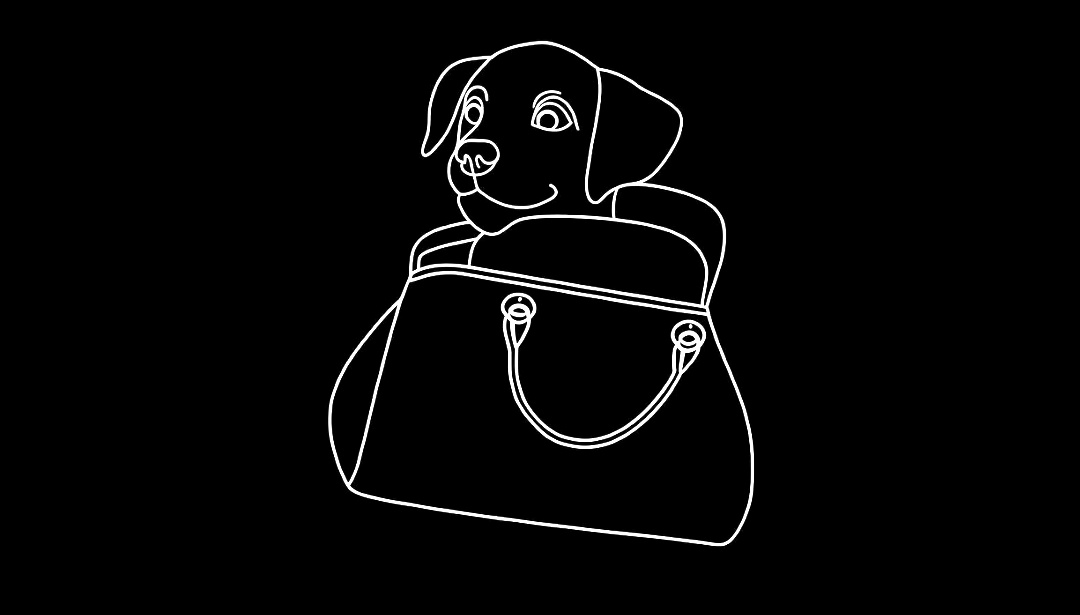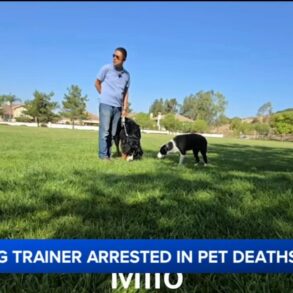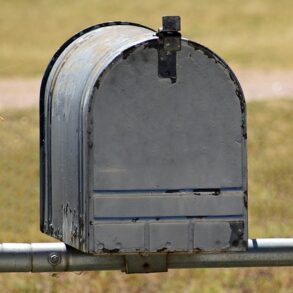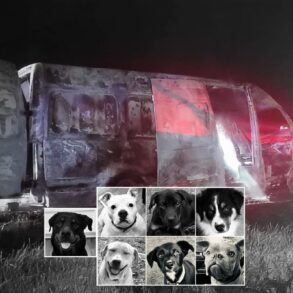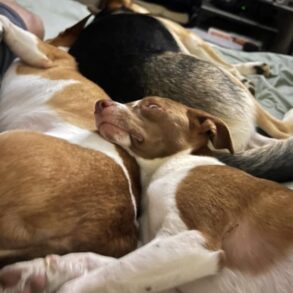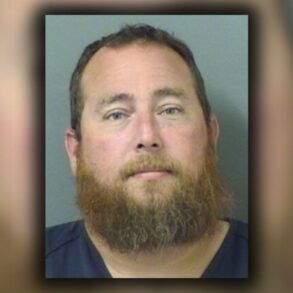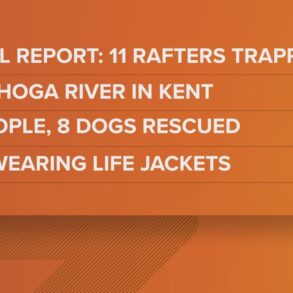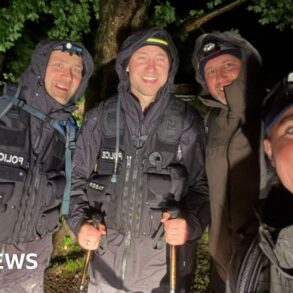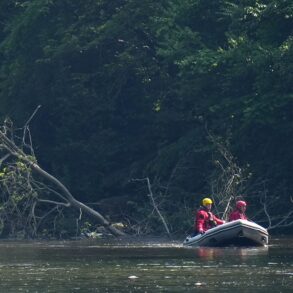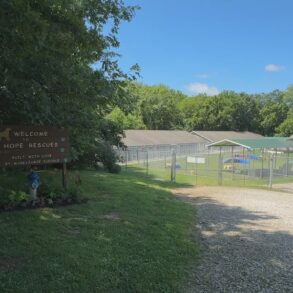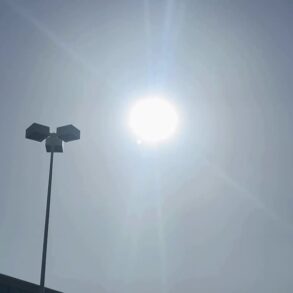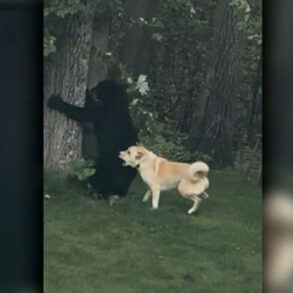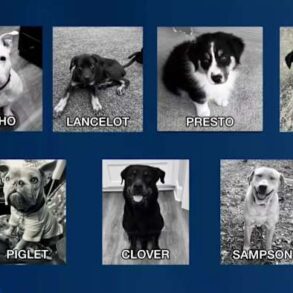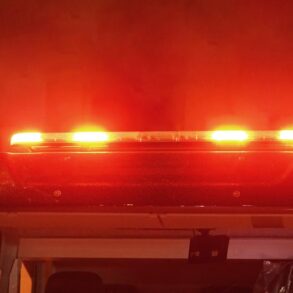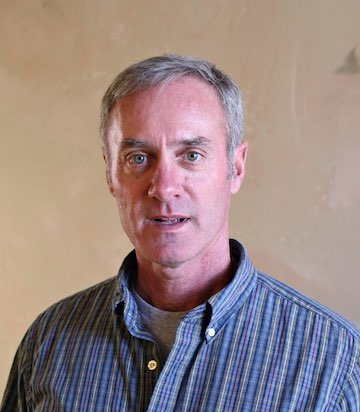
Tom Clyde mug
The other day I got up and went about my morning routine. The irrigation cycle on the pivot system had finished during the night. Part of completing the shutdown is cleaning the mud leg. That’s a short length of 3-inch diameter pipe, mounted vertically under the overhead boom of the sprinkler, that gives the silt and gunk a place to settle. The sprinkler is using water right out of the river, and this time of year, it’s pretty thick with silt.
To drain the mud leg, there’s a screw-in plug on the bottom. I climb up a kind of sketchy ladder built into the end drive tower, and holding on by a toenail, reach out and open it up. The mud is supposed to fall out of it with a solid plop, followed by a deluge of muddy water, and then I put the plug back in for the next water cycle.
Simple enough, but the mud was packed tight and didn’t move after being whacked with a wrench or a Scottish Blessing. So I did the reasonable thing. I climbed back down and decided to poke it with a shovel handle. That should do it.
The whole thing quickly took on a Wile E. Coyote aspect — I’m pretty sure I heard the Roadrunner “beep-beep” as the column of sort of fermented mud, backed by a couple of hundred gallons of water, came shooting out of the pipe into my face. The shovel was an “Acme” brand.
Any day that begins like that is a day for office work.
We are in the midst of a state process to review all of the water rights on the Provo River drainage. It began a couple of years ago where the Jordan River goes into the Great Salt Lake. They follow it all upstream, on every tributary stream, creek and well, reviewing every water right along the way.
The last time they did it was 100 years ago. Needless to say, there have been a few changes in the way water is used over the last 100 years, who uses it, and what for. Cooling data centers wasn’t a thing back then. There weren’t a half million people in the whole state. Our property is essentially the last patch of irrigated land on the river system.
The process is not going to be without conflicts despite pretty detailed records on all of it in the Utah Division of Water Rights. The assumption is that the directive is to wring the farms dry for the benefit of Wasatch Front cities, so it’s being met with some apprehension at the headwaters.
All of the folklore about Western water comes to mind. Even in abstemious Utah, “Whisky is for drinking, water’s for fighting.” My favorite, maybe because of the location of our property, is, “It’s better to be at the top of the ditch with a bad shovel than at the bottom of a ditch with a good lawyer.” My grandfather carried a pistol as well as a shovel when irrigating.
The state wants to know when the property was first irrigated. When did the canal that had covered me in mud that morning begin diverting water out of the river? And so down the rabbit hole. It’s very unusual, but the cluster of homesteaders who first stole this area from the Indians left remarkable histories of their pioneering experience.
The families who settled Woodland 20 years earlier often worked on the ranch here, and they left equally detailed histories. It’s so recent and compressed here. The Stewart family who bought all the homesteaders out had a great photo collection. Nobody took photographs in places like this in 1903, but there they are.
Weird stuff began to connect. The Potts brothers recorded digging the two-mile canal by hand. They sold out and went to the Alaska gold rush before ending up in Park City. There’s a brief description of building it, but not a solid date attached. The title abstracts on homestead properties are always a mess. The paperwork didn’t get filed on time, some of the property went from the feds to the state, and then into private ownership through a state homestead act with even sloppier paper flow. I could get about a five-year range on it, but no better than that.
Potts had a relative who homesteaded across the river. He had a title dispute with another guy (whose history reports he owed my great-great grandfather’s store a lot of money, and whose brother had eloped with my great-great aunt, creating a scandal such that her name was never spoken again) and there was paperwork on all that.
The story of what amounted to mutual accusations of claim-jumping was fascinating. The line between homesteading and squatting was pretty thin. But wrong ditch, wrong year.
Then I remembered the cave. There’s a cave that has a trace of a Fremont Indian pictograph in it, and next to that, a list of pioneer names and dates. The state people weren’t buying the idea that the first diversion from the river was by the Fremonts 1,200 years ago, but the whole Potts family had signed the wall in 1886. Good enough.
Tom Clyde practiced law in Park City for many years. He lives on a working ranch in Woodland and has been writing this column since 1986.
This post was originally published on this site be sure to check out more of their content.
